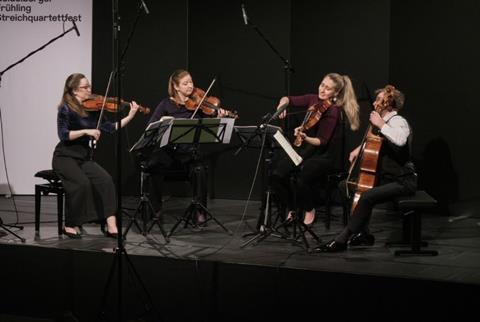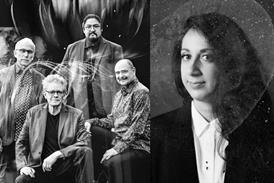Carlos María Solare reports from the German city, held at the Alte Pädagogische Hochschule Heidelberg from 19 to 22 January 2023

This year’s iteration of the Heidelberg String Quartet Festival was centred on Mozart, featuring practically all his output for string quartet. Hearing this body of work over a concentrated period of time (though not chronologically), it struck home forcefully the extent to which – speaking of Wordsworth – ‘the child is father to the man’: I kept hearing in the teenage Mozart’s music turns of phrase or instrumental detail that reminded me of the mature works. A workshop by the Kuss Quartet’s violinist Oliver Wille attempted to pin down what it is that makes Mozart sound like Mozart. More easily said than done, but we took home fascinating analyses of two archetypal movements which showed how Mozart transcended the models from previous generations. Another workshop featured two ensembles exploring the first movement of K428, Wille illuminatingly commenting upon their interpretations.
Mozart wrote his First String Quartet – K80 in G major – when he had just turned 14. While naturally far from the sophistication of the quartets he would dedicate to Haydn, the piece shows fantasy, formal mastery and a knack for making all the parts interesting. Mozart would retain a soft spot for his firstling, repeatedly showing it to potential patrons and clients. Here it opened the festival in an engaging interpretation by the Vienna-based Chaos Quartet. Taking note of period-performance practice, the players used open strings generously and added abundant embellishments. Later in the week, the Chaos made a good case for a 19th-century arrangement of Mozart’s Requiem, also showing its considerable mettle in Kurtág’s Officium breve and Ligeti’s First Quartet.
Performing on Classical set-up and gut strings, the Consone Quartet chose Mozart’s Divertimento K137, which is more often heard with massed strings. However, no string orchestra could replicate the rhapsodic exuberance with which it imbued the opening Andante. In K156 and Haydn’s op.33 no.2, the Consone made a good case for repeating both halves of opening movements, consistently highlighting new detail the second time round. The foursome pulled off the ‘Joke’ nickname of the Haydn most charmingly. Fresh from competition victories in Bordeaux and London, the Leonkoro Quartet resembled a perfectly tuned Rolls-Royce. Highlights included a sophisticatedly bowed Haydn ‘Bird’ (op.33 no.3) and a beautifully shaded Mozart ‘Dissonance’ (K465), as well as a colourful rendition of Sally Beamish’s kaleidoscopic Nine Fragments.
The Marmen Quartet (previous Bordeaux and Banff prize-winners), went all out for the G minor Sturm und Drang of K159’s middle movement – which, alongside the galant style of the outer sections, offered a wonderful example of the way the young Mozart absorbed the styles of his age. The Armida Quartet’s experience (it recently finished a recorded Mozart cycle) showed in its unshakeable aplomb, beautifully voiced chords and unanimous phrasing. The group revealed an original approach to appoggiaturas, varying their lengths in unexpected ways, and phrased most sweetly the premonition of The Marriage of Figaro in K172. Marko Nikodijevic’s Second Quartet – an Armida commission – was an exhilarating addition to the programme.
Quatuor Voce does its name proud, featuring four quite distinct ‘voices’ and setting store by contrasting rather than blending. With the two violinists sharing the leader’s duties, you get two quartets for the price of one, so different are their personalities: a most refined ‘Hunt’ (K458) and Ravel framed a fiery set of Schulhoff’s Five Pieces. But whoever was leading, the show was all but stolen by the group’s viola player, who – sitting far right – would turn out towards the audience to deliver solo after lovingly phrased solo. Happily, it fell to him to send off the Festival with the last strains of K590.
The number one source for playing and teaching books, guides, CDs, calendars and back issues of the magazine.
In The Best of Technique you’ll discover the top playing tips of the world’s leading string players and teachers. It’s packed full of exercises for students, plus examples from the standard repertoire to show you how to integrate the technique into your playing.
The Strad’s Masterclass series brings together the finest string players with some of the greatest string works ever written. Always one of our most popular sections, Masterclass has been an invaluable aid to aspiring soloists, chamber musicians and string teachers since the 1990s.
This year’s calendar celebrates the top instruments played by members of the Australian Chamber Orchestra, Melbourne Symphony, Australian String Quartet and some of the country’s greatest soloists.






































No comments yet